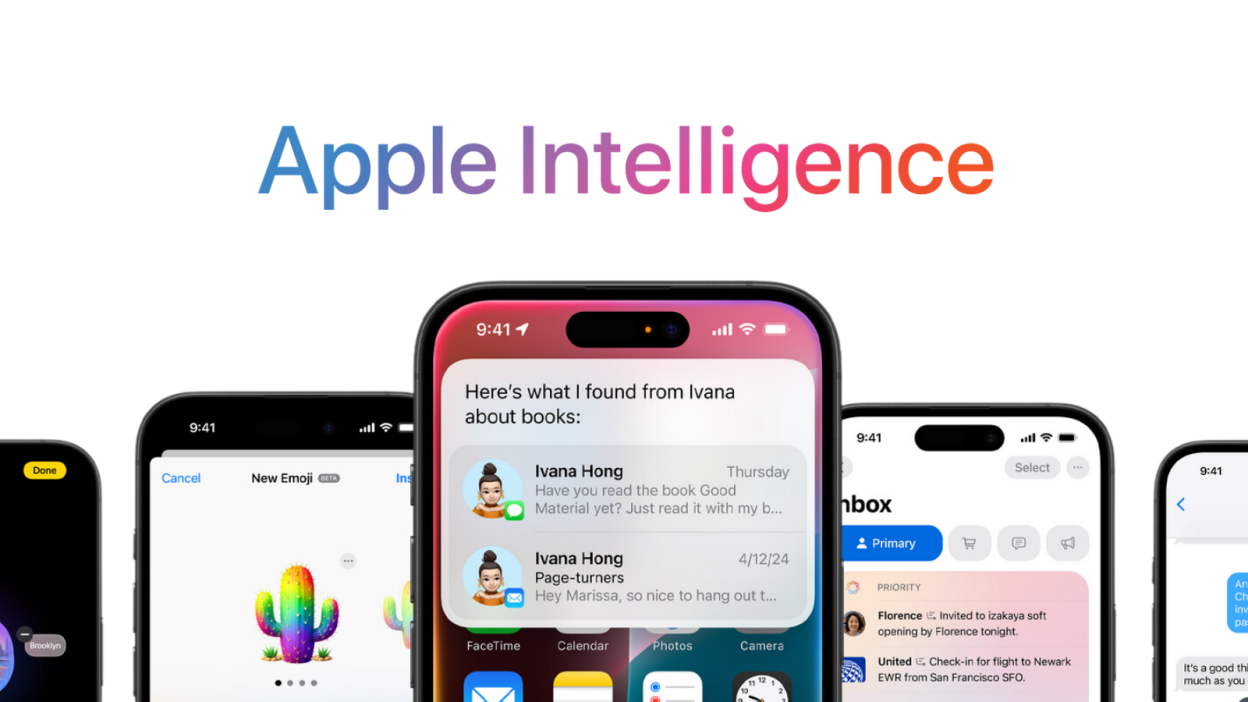Apple has finally entered the AI race — and it’s doing things the Apple way. At the WWDC 2025, Apple unveiled Apple Intelligence, its brand-new artificial intelligence system integrated into iOS 18, iPadOS 18, and macOS Sequoia.
Apple is prioritizing privacy, utility, and close system integration while other businesses are rushing to showcase their potent AI tools. So what is Apple Intelligence, how does it operate, and how does it differ from the work being done by OpenAI, Microsoft, and Google?
Let’s break it down in simple terms.
🤖 Explain Apple Intelligence?
Apple Intelligence (AI) is Apple’s new personal intelligence system built right into your iPhone, iPad, and Mac. Unlike typical AI chatbots or tools you need to open separately, Apple’s version works natively across your apps — like Messages, Mail, Safari, Photos, and even third-party apps.
It’s not just about generating text or images. It’s designed to actually help you get things done faster, with context-aware intelligence that knows what you’re working on — without invading your privacy.
🔐 Private by Design: AI That Respects Your Data
What sets Apple apart is its focus on on-device processing. That means much of the AI runs directly on your iPhone or Mac — not in the cloud. So your personal data (like messages, calendar events, and files) never leaves your device unless absolutely necessary.
When more power is needed, Apple uses something called Private Cloud Compute — a secure way to send your data to Apple servers temporarily, without storing it. In short: you get the power of cloud AI without giving up privacy.
📱 Things You Can Do with Apple Intelligence
Here are some everyday tasks Apple Intelligence can help you with:
• Summarize long messages or emails in seconds
• Rewrite or polish your writing in Mail or Notes
• Create custom emojis (Genmoji) by just typing a description
• Generate smart replies in Messages, based on your tone and intent
• Find specific photos or documents by describing them
• Schedule tasks or emails using natural language
And the best part? You don’t need to “use AI” as a separate thing. It’s already there — helping in the background.
🗣️ Siri Just Got Smarter
Siri has been rebuilt using Apple Intelligence. You can now:
• Type or talk to Siri
• Ask follow-up questions (finally!)
• Get help with in-app tasks, like editing photos or finding a note
• Control your device more naturally: “Siri, show me all the photos I took in Goa last December and turn them into a slideshow.”
This version of Siri feels more like a true assistant than ever before.
🤝 Apple x ChatGPT👌:
Apple also made headlines by announcing its partnership with OpenAI, integrating ChatGPT into iOS 18 — but with a twist. ChatGPT is used only when Apple Intelligence can’t help you fully, like answering trivia or generating creative content.
You’ll be asked before any data is shared with ChatGPT, and it won’t know who you are.
📲 Who Can Use It?
Apple Intelligence will only be available on newer, more powerful devices:
• iPhone 15 Pro & Pro Max (and later models)
• iPads and Macs with M1 chips or higher
It’s coming later in 2025 as part of iOS 18, iPadOS 18, and macOS Sequoia.
🧠 Final Thoughts: Quiet Revolution in Your Pocket
Apple isn’t trying to outdo ChatGPT or Gemini with flashy demos. Instead, it’s building a personal assistant that quietly makes your digital life easier — without selling your data or overloading you with tech.
With Apple Intelligence, the future of AI feels more personal, more helpful, and more private.




Leave a Reply